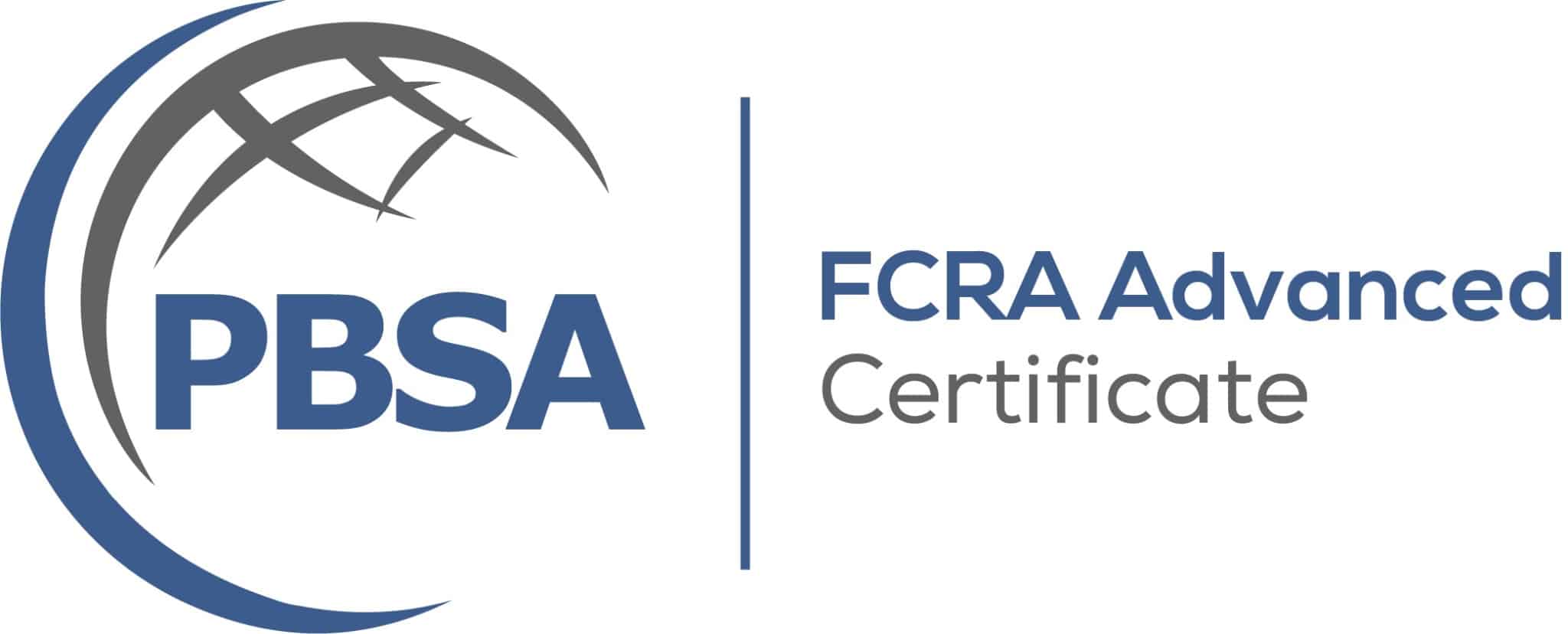Hire Smart in a Roller Coaster Economy A Small Business Playbook
Markets are whiplashing. Demand spikes, then cools. Budgets tighten. In a roller coaster economy, your hiring plan needs a throttle you can feather up or down — and your background screening program is the lever that keeps decisions precise, compliant, and fast. This playbook shows how to use screening to control risk and speed at the same time. If you’re scaling, keep checks clean with FCRA-compliant employment background checks.
Quick Summary
- Use background screening as a stability lever: align depth with role risk, standardize decisions, and move fast without mistakes.
- Run the PACE throttle: Prioritize roles, keep Agile budgets, open Contractor-to-hire lanes, and use Entry/exit indicators tied to data.
- Make screening candidate-friendly: clear consent, mobile-first forms, and proactive status updates.
- Review monthly: hiring checkpoints plus a screening scorecard (turnaround, disputes, adjudication consistency).
What a “roller coaster” economy means for hiring
Volatility shows up as stop-start demand, longer budget approvals, and shifting headcount priorities. It’s easy to over-hire on a surge or freeze too hard after a dip. Both moves cost time, money, and goodwill.
What to watch: sales pipeline swings, cash conversion, open order backlog, and labor market signals (like job openings vs. quits). These help you calibrate speed and spend before you post a req.
Bottom line: Don’t guess—plan for swings. Align hiring pace to leading indicators and protect compliance so you’re never forced into risky shortcuts.
The PACE Throttle: scale hiring up or down fast
Use these four levers to adjust without drama:
- Prioritize critical roles. Rank by revenue impact, risk reduction, and time-to-productivity. “Must-hire now,” “opportunistic,” and “parked” buckets keep focus.
- Agile budgets. Stage spend by milestone: sourcing → shortlist → soft offer → start. Advance only when revenue signals confirm.
- Contractor-to-hire lanes. Cover uncertainty with scoped statements of work, 30–60–90 plans, and clear conversion criteria.
- Entry/exit gates. Tie green/yellow/red lights to bookings, backlog, churn, and capacity. If metrics slip, tap the brakes before offers go out.
Key takeaway: PACE gives you speed without the whiplash.
Role Prioritization Matrix
Plot each role on a 2×2: revenue criticality vs. time-to-productivity. Add a third lens for compliance/safety sensitivity.
- Must-hire now: direct revenue or safety-critical (e.g., lead technician, store manager).
- Opportunistic: strong ROI but can batch hires (e.g., SDRs, analysts).
- Parked: long ramp or low ROI right now.
Pro move: pre-draft job briefs and structured rubrics for the top two buckets so you can move same-week when signals turn green.
Key takeaway: Prioritize by impact, not pain.
Precision Background Screening: Your Stability Lever
When the market lurches, screening is how you stay precise. You reduce costly mis-hires, move faster on green-light candidates, and keep compliance tight, even with a lean team.
1) Match package depth to role risk
| Role Type | Recommended Core Checks | Add-Ons (as needed) | Why It Matters |
|---|---|---|---|
| Customer-facing retail, cash handling | Identity, multi-county criminal, sex offender, OFAC/sanctions | Employment verifications, theft-screen policy alignment | Reduce shrink and reputational risk; faster time-to-hire for frontline roles |
| Warehouse, driver, safety-sensitive | Criminal, MVR, DOT/non-DOT drug testing (policy-based), employment verifications | License checks, education, OSHA training verification | Lower incident risk; meet insurer or regulatory expectations |
| Professional services, finance, IT | Criminal, employment & education verifications | State/federal civil records, credit (permissible purpose), professional license | Trust and client-facing credibility; protect data and access |
2) Standardize decisions with an adjudication matrix
- Define job-related criteria and look-back periods by role family.
- Document “clear,” “review,” and “disqualify” tiers with example scenarios.
- Apply consistently to reduce bias and speed decisions when volume swings.
3) Keep candidate experience fast and clear
- Use mobile-first consent and disclosures with plain-language instructions.
- Provide real-time status updates and a simple dispute path.
- Pre-adverse and adverse action steps should be templated and automated.
4) Control cost without cutting corners
- Use a “core + conditional” model: run the core package first, then release add-ons only when required for the role.
- Batch county searches geographically when hiring multiple candidates from the same area.
- Leverage verifications selectively: always for leadership/sensitive roles; sample or skip for low-risk seasonal roles per policy.
5) Add a monthly screening scorecard
- Turnaround time by component (criminal, MVR, verifications).
- Hit rates (records found), adjudication tier mix, and dispute outcomes.
- Compliance checks: disclosure/authorization on file, pre-adverse timeliness, consistent notices.
Key takeaway: Right-sized screening gives you speed when you can hire and brakes when you shouldn’t — all while staying compliant.
If you staff stores or distribution, see our retail employee screening options. For plant or warehouse roles, consider manufacturing hiring background checks.
Always-on pipeline without overspending
In choppy markets, you can’t afford to rebuild from scratch. Keep a small, steady stream of qualified candidates warm.
- Evergreen reqs for top roles plus “introduce yourself” forms.
- Alumni and boomerangs. Past top performers are your lowest-risk hires.
- Talent community touchpoints: monthly micro-newsletter, short “day-in-the-life” video, and a one-page role brief with outcomes, not fluff.
Metrics to watch: pipeline depth by tier, reply rates, and time to shortlist. Audit monthly and prune dead ends.
Key takeaway: Small, steady pipeline beats big, expensive spikes.
Contractor or full-time? A simple decision tree
When demand is lumpy, match employment type to risk.
- Choose contractor for clearly bounded projects, seasonal peaks, or short budget windows.
- Choose FTE for roles with IP access, leadership continuity, customer ownership, or regulated duties.
How to set up C2H: define a 30–60–90 plan with deliverables, culture fit check, and conversion criteria (timing, comp, and success metrics). Review classification tests with counsel if role control looks like a full-time arrangement.
Key takeaway: Let scope and risk decide the badge color.
Data-driven hiring checkpoints
Run a monthly readout before you open or close reqs.
- Leading indicators: net new bookings, qualified pipeline value, backlog, churn, cash on hand, throughput per head.
- Throttle scorecard: green (expand), yellow (hold), red (pause). Document thresholds so decisions are repeatable.
- Pause with grace: send a soft-freeze update, keep silver medalists tagged, and offer a quick keep-warm touch every 30–45 days.
Key takeaway: Decisions beat vibes. Use numbers.
Mini-scenarios by sector
Retail: seasonal peaks look softer than last year, but weekends still surge. Open C2H lanes, prioritize weekend availability, and right-size your screening with retail employee screening.
Manufacturing: orders fluctuate; safety never does. Fill cross-trainable roles first and keep MVR, drug, and license checks tight via manufacturing hiring background checks.
Professional services: revenue rides project starts. Use scoped offers and bench forecasting; convert top contractors when backlog locks.
Tools & templates you can copy
- Role Prioritization Matrix (2×2 + safety lens)
- 30–60–90 Contractor-to-Hire Plan with conversion criteria
- Hiring Throttle Scorecard (green/yellow/red thresholds)
- Adverse Action Checklist (disclosure, authorization, pre-adverse, dispute window, final notice)
Key takeaway: Simple templates keep you fast and compliant when the ride gets bumpy.
FAQ
Q: How often should we re-check background screenings in volatile times?
A: Most employers re-screen on role-driven intervals (e.g., annually for safety-sensitive). Tie cadence to risk and policy. If you change roles or job duties, treat it like a new screen.
Q: What’s a reasonable time to keep candidates “warm”?
A: 10–20 days between personalized touchpoints works well. Be transparent about timing and give a clear next update so candidates don’t feel ghosted.
Q: How do we communicate a hiring freeze without burning bridges?
A: Own the pause, give a timeframe, and invite opt-in updates. Offer a brief “keep-warm” call to top finalists and set a date to reconnect.
Q: When does contractor classification get risky?
A: If you control schedule, methods, and tools like an employer, or the work is core ongoing labor, risk rises. Review classification tests with counsel.
Q: What if a background check reveals something mid-pipeline?
A: Follow your adjudication matrix. If it may change your decision, issue pre-adverse action with a copy of the report and the Summary of Rights, allow a dispute window, then decide.
Conclusion
Uncertain markets reward teams that can adjust hiring speed and scope without cutting compliance. Use screening as your stability lever: right-size depth by role, standardize decisions, and keep candidates informed. Ready to calibrate your screening program? See our background check pricing.
Compliance Note
- Provide FCRA disclosure and obtain written authorization before screening.
- Apply a consistent adjudication matrix aligned with EEOC guidance on job-relatedness.
- Use pre-adverse and post-adverse action notices with the CFPB’s current Summary of Rights.
The resources provided here are for educational purposes only and do not constitute legal advice. We advise you to consult your own counsel if you have legal questions related to your specific practices and compliance with applicable laws.












